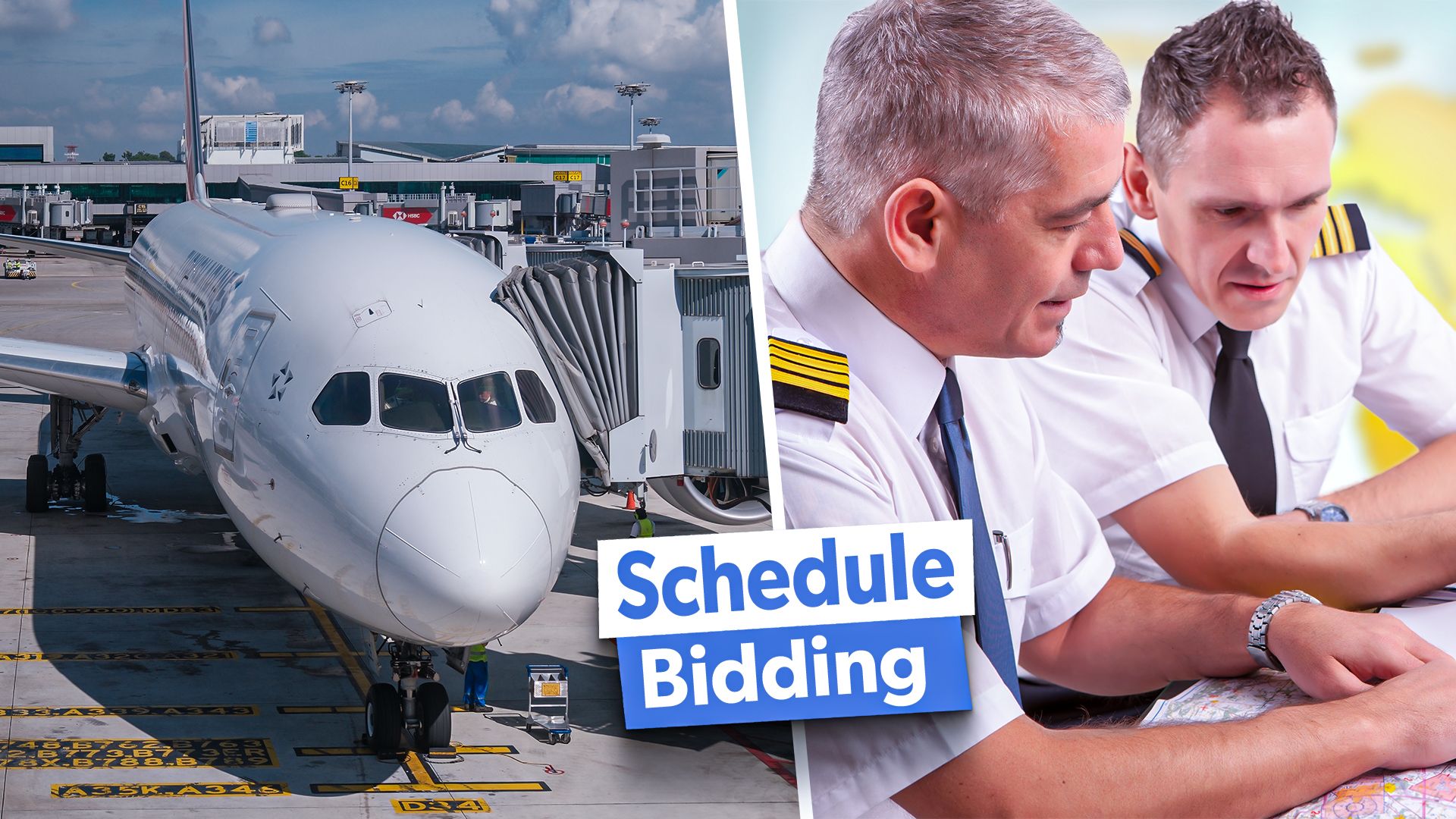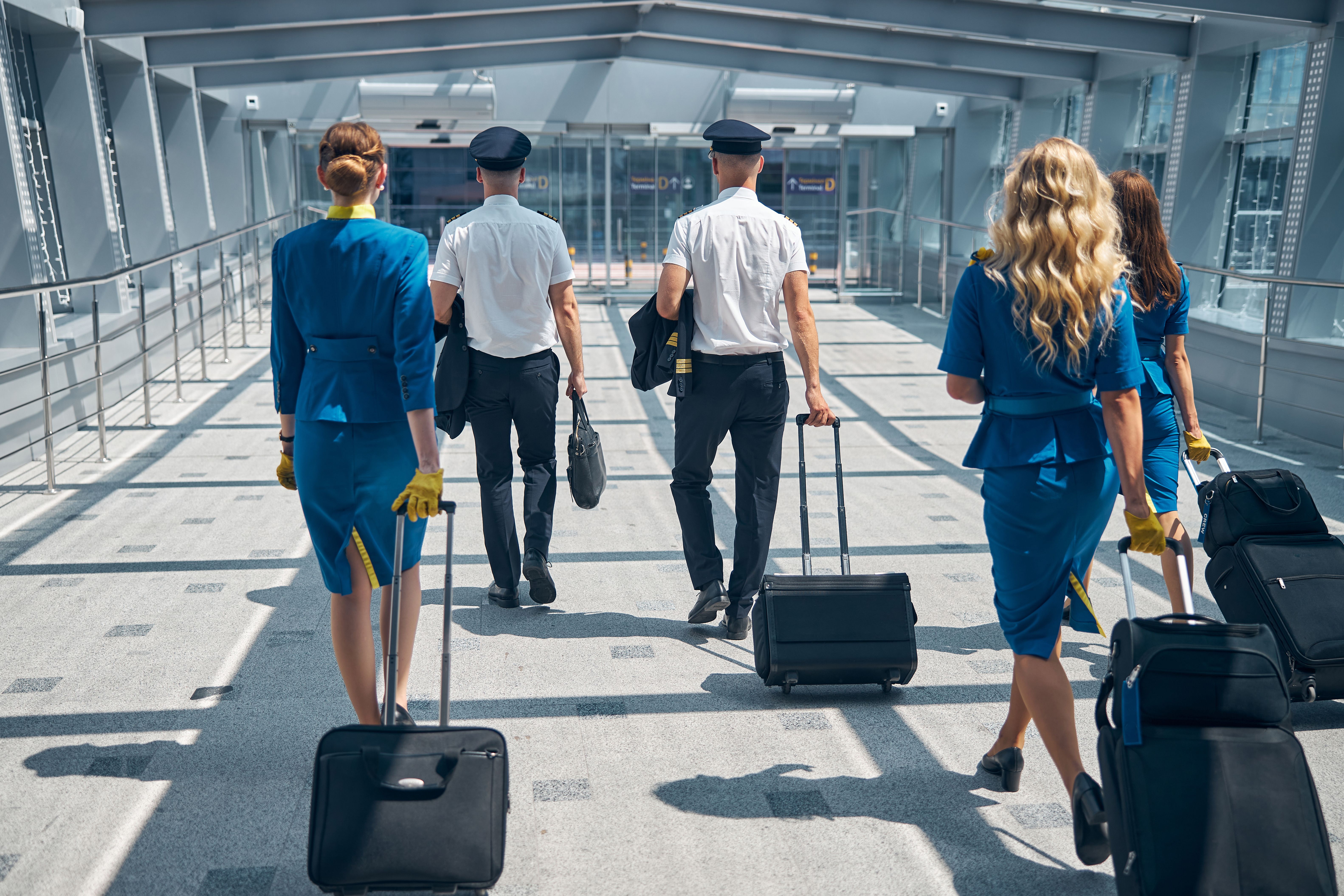Monthly bidding is as much a part of an airline crewmember’s life as sleeping or eating. Bidding for a schedule indicates what trips, days off from work, and other criteria a crew member desires for the impending month. Bidding is important to crew members because it directly correlates to one’s quality of life. Here’s how the monthly bidding process works and some insights into it.
Bidding basics
US airline employees who are required to bid for their work schedules use two methods for processing: preferential bidding systems and traditional line bidding. The kind of bid system an airline uses is usually agreed upon by the unions that represent the employees and the airline. However, some flight attendants and dispatchers who bid lack union representation and use whatever system the company has in place.
Photo: Svitlana Hulko | Shutterstock
Preferential bidding systems
Preferential bidding systems allow pilots to input nearly unlimited qualifiers and indicators. Functions can be as straightforward as requesting a hard schedule over a reserve schedule, indicating desired days off, or having layovers in a particular city. Layers of complexity can be added to the bidding system for more niche requests, such as wanting to fly with a specific pilot, wanting layover lengths of a particular value, or starting and ending qualified trips at specific times of the day.
The bidding system does its best to honor all indications a bidder makes with the available flying when the system gets to that pilot in seniority order. Therefore, the most senior pilots in a category have all their preferences met, while the most junior get whatever flying is left at the tail end of the “bid run.” Often, this means that the most junior pilots get reserve schedules.
Line bidding
Line bidding is similar to preferential bidding systems but generally lacks flexibility. Before each monthly bid, the airline publishes all the available “lines,” or monthly schedules that have already been constructed. Rather than indicating the criterion an individual wants to be met, crew members who use line bidding programs input the available lines for bidding in rank choice order.
Some pilots who use line bidding comb through every published line, checking for trip start times, days off, layover cities, length, time away from base, etc. However, most line bidders use software to help distill the bid packet into a ranked order, which they input into the airline’s bid system. The non-proprietary software used to rank lines automatically functions like preferential bidding software. Therefore, the main difference between line and preferential bidding systems is the company-sponsored primary interface used to bid.
Available flying
As mentioned, pilots and flight attendants bid for the flying that the company publishes in anticipation of each coming month. There’s usually more flying during the summer than in the winter since most leisure travel and vacationing happens during warm seasons. Therefore, there’s often significantly less flying available during the winter than during the summer, meaning there are fewer flights and lines for crewmembers to bid for.
In response to lighter flight schedules, airlines lower the total time value of flying for schedule holders while reducing the guaranteed monthly hour payment. This results in slightly lower incomes during the winter compared to summer simply because the average schedule has diminished amounts of work. For example, a bidder for summer schedules might expect a schedule worth 76 hours of flying credit, while bidding the same way during the winter might result in 70ish hours of credit (but more time at home). The monthly guarantee for a reserve pilot drops similarly.
Many pilots bid to avoid colder places and destinations where it snows during the winter. Snow and cold weather generally mean a slower operation and the difficulties of deicing or getting snowed in. Senior pilots can bid for and be awarded flying schedules focusing on cities further south. This can be done by indicating airports or layovers to “avoid” in the bid system. Longhaul flying also changes appreciably. There are usually fewer European flights for US-based pilots as airlines focus on using their widebody fleets to fly between their hubs or to sunnier, warmer destinations like Phoenix, Las Vegas, and the Southern Hemisphere.
Changing a schedule after bidding ends
A pilot or flight attendant who doesn’t like how their bid turned out for a particular month has multiple options to amend their coming trip sequence of days off from reserve. After bids have been “awarded” (the term airlines use for an assignment), crewmembers can submit requests to change their schedule or swap trips with any that remain unclaimed (often referred to as “open time”).
Some crewmembers also can swap directly with each other. However, both pilots need to be on the same fleet, in the same seat, and the same base city (also known as a category) for this to work. Pilots who want to trade trips can indicate this by posting in airline forums and private forums online that only pilots for that airline can access.
The worst-case scenario for a pilot is forgetting to submit a bid altogether. Regardless of that pilot’s seniority, an empty bid usually means the worst days off on a reserve schedule since they’ll be stuck with whatever is left at the bottom of the bidding barrel. To avoid this, many pilots have “standing bids” that remain in the system monthly to get something acceptable even if they forget to bid. If it isn’t apparent, bidding is essential to crewmembers. It’s a monthly ritual that is an intrinsic part of airline life.


